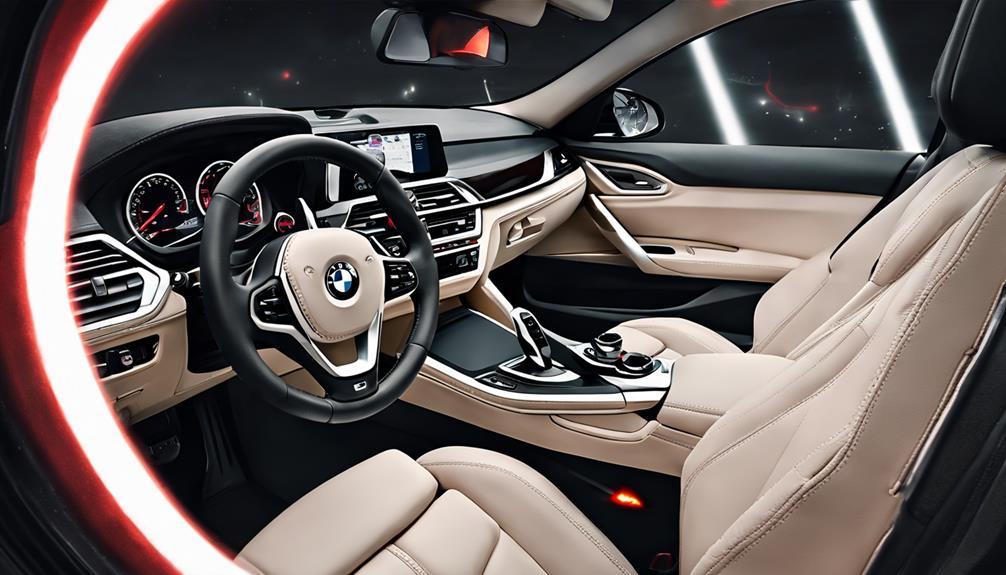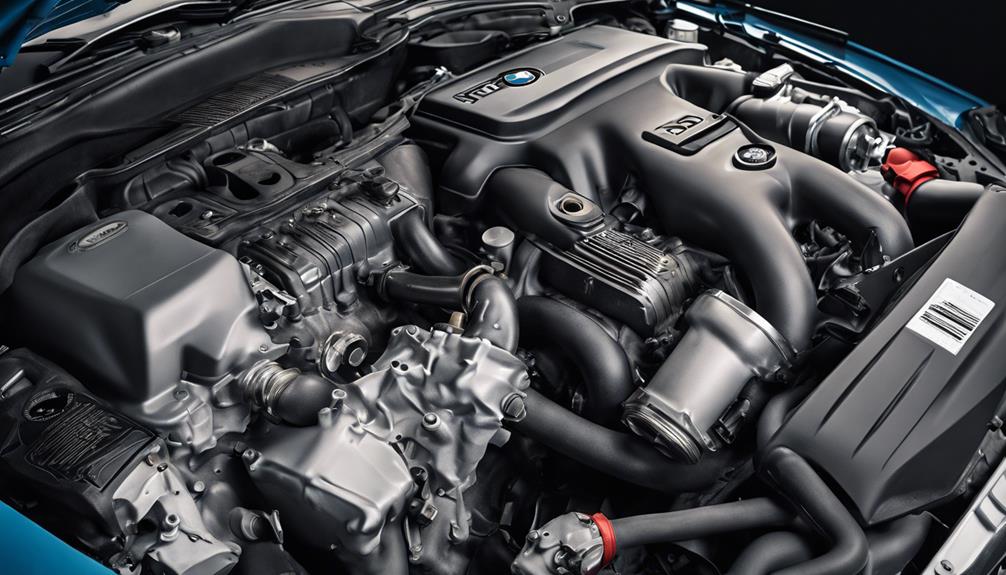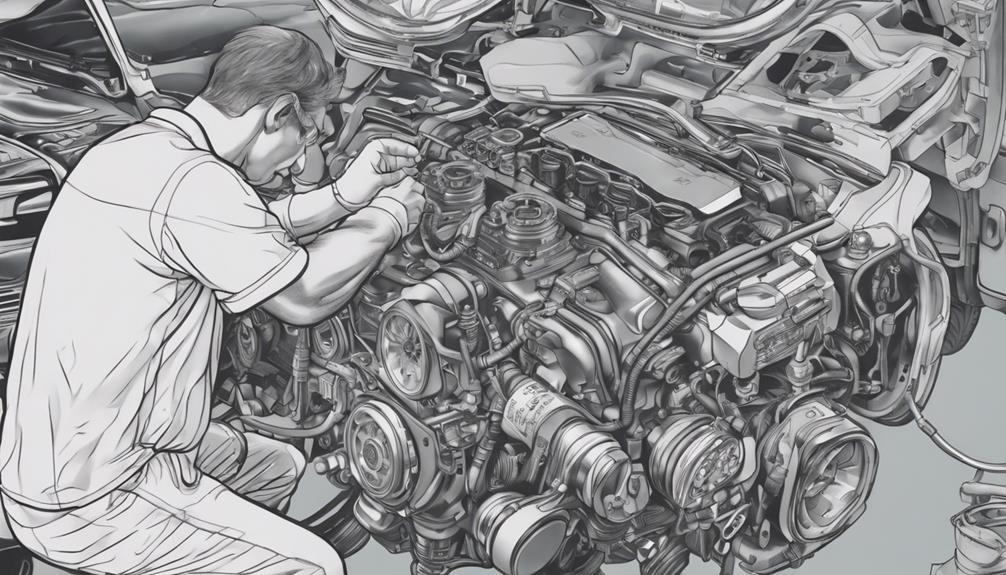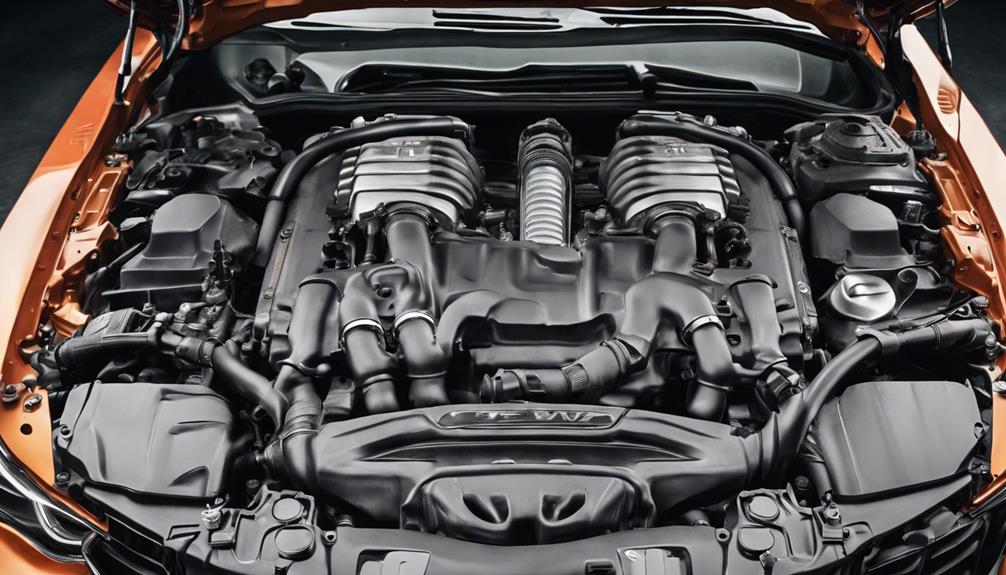If you're driving a BMW 330i, be cautious of TPMS malfunctions indicating tire pressure issues impacting ride comfort and safety. Stay vigilant of dashboard warning lights to address critical or imminent problems promptly. Explore further into fog light activation, lane-keeping assist glitches, automatic shift lock failures, and traction control system troubles to keep your driving experience smooth and trouble-free. Pay close attention to ABS warning lights for brake system faults that may require proper diagnosis. And for professional repair recommendations and proactive issue management, it's wise to seek expert assistance to maintain peak performance and longevity of your BMW 330i.
Key Takeaways
- Oil consumption issues may require professional repair services.
- Monitor TPMS for tire pressure problems affecting performance.
- Address ABS warning lights promptly for brake system faults.
- Check fog lights for proper activation to enhance visibility.
- Ensure sensor calibration for effective Lane-Keeping Assist System.
TPMS Malfunction Warning

When your BMW 330i's TPMS Malfunction Warning light illuminates, it's important to heed this signal for the best tire performance and safety. This light serves as your car's way of saying, 'Hey, check the tire pressure; I care about your safety!' Ignoring this warning is like pretending your morning coffee isn't necessary – sure, you can do it, but is it wise?
Proper tire pressure not only affects your ride comfort but also your car's handling, fuel efficiency, and overall safety. It's like having the right shoes for different occasions – you wouldn't wear flip-flops to a job interview, right?
Taking care of your TPMS warning is as vital as remembering your best friend's birthday – it shows you care. Auto repair shops can help diagnose the issue and get your tire pressure back on track. Remember, a well-inflated tire is a happy tire, and a happy tire makes for a smoother, safer ride.
Dashboard Warning Lights Explanation
When it comes to your BMW 330i dashboard warning lights, deciphering the colors, symbols, and corresponding actions is crucial. Understanding the red, yellow, and green indicators can help you tackle issues promptly and keep your vehicle running smoothly.
Let's shed some light on these illuminating symbols to guarantee you're always in the driver's seat when it comes to your car's health.
Warning Light Colors
Amidst the array of colors adorning the dashboard of your BMW 330i, each warning light serves a distinct purpose in alerting you to potential issues on the road.
Red lights demand immediate attention, signaling critical problems like low oil pressure or engine overheating that can't wait.
Yellow lights, on the other hand, whisper caution, hinting at issues that need addressing soon – think low tire pressure or a dodgy brake system.
Green lights are the cool cucumber of the group, letting you know about system activations such as high beams or cruise control engaging.
Lastly, blue lights are the informative buddies, casually reminding you of things like high beam assist mode or that your high beams are on.
Stay aware, stay safe.
Meaning of Symbols
Understanding the symbols of dashboard warning lights in your BMW 330i is crucial for safe and well-informed driving. Here are some key symbols and their meanings:
- Tire Pressure Monitoring System (TPMS) Light: Indicates tire pressure issues that need to be addressed promptly.
- Fog Lights Indicator: Shows when fog lights or daytime running lights are activated for improved visibility.
- Lane-Keeping Assist Light: Signifies the system is active and helping keep your car within the lane for added safety.
- Automatic Shift Lock: Requires brake activation before starting or shifting, enhancing safety measures while driving.
Being familiar with these symbols can help you address potential issues promptly and guarantee a smooth driving experience in your BMW 330i.
Action for Each
To effectively respond to the various dashboard warning lights in your BMW 330i, understanding the corresponding actions for each symbol is essential for safe and efficient driving.
When the Tire Pressure Monitoring System (TPMS) light illuminates, check and adjust tire pressure accordingly to maintain peak performance.
If the fog lights or daytime running lights indicator is on, confirm the correct lights are activated for visibility.
Stay aware of Lane-Keeping Assist engagement through its dashboard light, indicating the system is actively keeping your vehicle in the lane.
Remember to activate the brakes before starting or shifting if the Automatic Shift Lock light appears.
Finally, keep an eye on the Traction Control light for any spinning wheels on slippery surfaces, indicating system activation or issues that need attention.
Stay informed, stay safe on the road!
Fog Lights Activation Issue
When troubleshooting fog light activation issues in your BMW 330i, it's crucial to thoroughly investigate potential causes. Here are some common reasons why your fog lights may not be turning on:
- Switch, Wiring, or Bulb Connections: Check for any loose connections or damage that may be impeding the fog lights from activating.
- Light Control Module Settings: Incorrect settings in the control module can hinder the fog lights from coming on when needed.
- Faulty Relay or Fuse: A malfunctioning relay or blown fuse can disrupt the circuit and prevent the fog lights from working.
- Moisture or Water Ingress: Ensure that the fog light housing is sealed properly to prevent moisture from causing malfunctions.
Lane-Keeping Assist Problems

If you've noticed your BMW 330i's Lane-Keeping Assist acting up, you might be dealing with sensor calibration issues or pesky false lane departure warnings. These problems can make your driving experience a tad more stressful than it needs to be, but fear not – proper maintenance and calibration can often set things right.
Sensor Calibration Issues
Calibrating sensors accurately is essential to make sure the Lane-Keeping Assist system in the BMW 330i operates at its best. When sensor calibration goes awry, it can lead to a host of issues that may compromise the effectiveness of this safety feature.
Here are some key points to bear in mind regarding sensor calibration problems in the BMW 330i:
- Malfunctioning System: Incorrect sensor calibration can cause the Lane-Keeping Assist system to malfunction, impacting its ability to keep the vehicle within the lane.
- Inaccurate Interventions: Improper sensor calibration may result in the system providing inaccurate steering interventions, posing a safety risk.
- Effective Operation: Proper sensor calibration is essential for the Lane-Keeping Assist feature to effectively function and enhance driving safety.
- Timely Resolution: Addressing sensor calibration issues promptly is crucial to ensure the system operates correctly and maintains safety standards.
False Lane Departure Warnings
To address false Lane Departure Warnings in BMW 330i models, recalibrating the Lane-Keeping Assist system or updating the software can often be effective solutions. Sensor malfunctions or software glitches are common culprits behind these erroneous alerts. The Lane-Keeping Assist system may exhibit inaccuracies in lane detection or unnecessary steering wheel vibrations, leading to unwarranted warnings.
Factors like poor road markings or intense sunlight can also trigger false alerts in the 330i. Regular maintenance and system checks are vital to both tackle and prevent these issues. By staying proactive and ensuring your system is up to date, you can enjoy a smoother driving experience without the frustration of misleading Lane Departure Warnings.
Automatic Shift Lock Failure
When encountering Automatic Shift Lock failure in your BMW 330i, ensuring the brake becomes essential for smooth starting and shifting. This issue can catch you off guard initially, but fret not, here are some tips to navigate through this challenge:
- Brake Activation: Make sure your foot is firmly on the brake pedal before attempting to start or shift the vehicle.
- Dashboard Indicator: Keep an eye out for the Automatic Shift Lock failure light on the dashboard; it's your cue to apply the brake.
- Safety First: While it may seem like an inconvenience, remember that this feature is designed to enhance safety by preventing unintended movements.
- Preventive Measures: Understanding how the Automatic Shift Lock system operates can save you from unexpected troubles while driving your BMW 330i.
Traction Control System Troubleshooting

Encountering issues with your BMW 330i's Traction Control System can greatly impact your driving experience, especially on slippery roads. This system is your reliable companion when it comes to preventing wheel spin and maintaining stability. When the dashboard light indicates its activation, you know it's on duty, keeping you safe.
However, if warning lights start flashing or something feels off, it's time for some troubleshooting.
Troubleshooting the Traction Control System is vital for ensuring your safety on the road, particularly in challenging conditions. Issues with this system can compromise your driving stability, which isn't something you want to gamble with.
Understanding how this system works and being able to identify warning signs can make a real difference in your driving experience. So, pay attention to those dashboard signals and address any problems promptly to keep your BMW 330i running smoothly and safely.
ABS Warning Light Concerns
Concerning the ABS warning light in your BMW 330i, vigilance is key when it comes to addressing potential issues with the anti-lock braking system. Here's what you need to know:
- Brake System Faults: The ABS warning light may illuminate due to brake system faults, such as low brake fluid or worn brake pads. It's important to address these issues promptly to maintain peak braking performance.
- ABS Component Problems: Issues with ABS components, like the control module or hydraulic unit, can trigger the ABS warning light. Proper diagnosis and repair are essential to make sure the ABS functions correctly.
- Warning Sign: The ABS warning light serves as an early warning sign for drivers to investigate and resolve any issues affecting the ABS system. Ignoring this warning can lead to safety risks on the road.
- Wheel Speed Sensor Malfunctions: Wheel speed sensor malfunctions are a common cause of the ABS warning light in the BMW 330i. Regular maintenance and timely sensor replacement can help prevent this issue.
Professional BMW Repair Recommendations

To address intricate issues like mysterious oil consumption problems in certain BMW 330i models, seeking professional BMW repair services is highly recommended. While some might attempt DIY fixes, professional repair shops offer the expertise needed to diagnose and address persistent oil consumption issues effectively.
Even after replacing parts like the oil separator, experienced technicians can navigate the variability in oil consumption among different 330i models and recommend tailored solutions. These services not only help manage the significant maintenance costs associated with resolving oil consumption problems but also provide valuable insights for potential buyers looking to purchase a 330i model.
Consulting with BMW repair experts guarantees that you're well-informed about any oil consumption concerns, allowing you to make informed decisions and potentially avoid future headaches. When it comes to addressing complex issues like oil consumption in your BMW 330i, entrusting the job to professionals can save you time, money, and unnecessary stress.
Prompt Addressing of Vehicle Issues
Addressing vehicle issues promptly is crucial to prevent further damage and costly repairs while maintaining peak performance and longevity. When it comes to your BMW 330i, staying ahead of common problems is vital. Here are four essential steps to guarantee your vehicle stays in top shape:
- Regular Inspections: Schedule routine maintenance checks to catch any issues early on.
- Immediate Action: Don't ignore warning signs like unusual noises or dashboard alerts; address them promptly.
- Professional Assistance: Seek help from certified BMW technicians or reputable forums to diagnose and fix problems accurately.
- Proactive Approach: Stay informed about common 330i issues like oil leaks or electrical malfunctions, and take proactive measures to prevent them.
Frequently Asked Questions
Is a BMW 330i Reliable?
You can count on the BMW 330i for reliability, blending power and efficiency. Following maintenance schedules helps minimize issues. While no car is flawless, proper care guarantees durability and longevity, making the BMW 330i a solid choice.
Is There a Recall on BMW 330i?
If you're curious about recalls on the BMW 330i, there isn't a particular one at the moment. Manufacturers issue recalls for safety or performance concerns. Stay updated by checking the NHTSA website. It's essential for owners to stay informed.
Why Does My BMW 330i Randomly Not Start?
When your BMW 330i randomly won't start, it could be due to issues with the battery, starter, ignition switch, or fuel system. Consider checking your key fob, immobilizer, or fuel pump for potential problems.
Does the BMW 330i Have Enough Power?
You bet the BMW 330i has enough power for your needs. With 255 horsepower and 295 lb-ft of torque, it's got a punchy 0-60 time, making it perfect for your daily drive.









